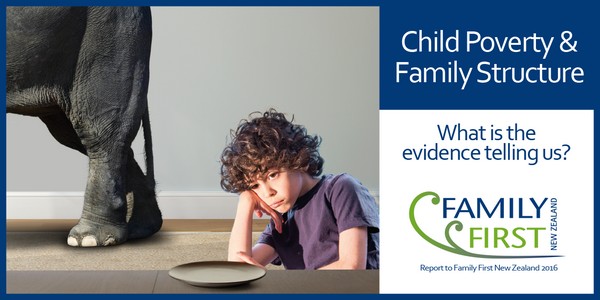Lindsay Mitchell: Child poverty exaggerations exposed by official source
 Lindsay Mitchell blog 10 September 2016
Lindsay Mitchell blog 10 September 2016
Family First Comment: An excellent article highlighting the false information around child poverty. It begs the question – what’s the real agenda when political groups exaggerate child poverty stats?
Below is a random selection of reports regarding child poverty in New Zealand. They represent only a small fraction of similar claims:
As many as 28 per cent of New Zealand children – about 305,000 – currently live in poverty.
When a child grows up in poverty they miss out on things most New Zealanders take for granted. They are living in cold, damp, over-crowded houses, they do not have warm or rain-proof clothing, their shoes are worn, and many days they go hungry. It can mean doing badly at school, not getting a good job, having poor health and falling into a life of crime.
Unicef, New Zealand
Save the Children chief executive Heather Hayden says child poverty could have a huge effect on our economy.
“Unless there is a change of course, we’re at risk of writing off the future of hundreds of thousands of New Zealand children – sentencing them to a lifetime of poverty.
“This is not just up to the Government to fix, but for all of us to make different choices so the 305,000 children currently struggling every day to get what they need to thrive, can have a future,” she says.
Save the Children
Ms Turei said 375,000 children lived in cold, damp houses and most of them were rented. “We would create minimum performance standards for rental properties which would ensure warm, healthy homes for thousands of children.”
Green Party
“…here in our first world paradise, 270,000 children are not getting the start they need in life.
These children of Aotearoa, New Zealand:
• Suffer from preventable,life-threatening diseases usually only seen in third world countries
• Live in cold, damp, overcrowded, unsafe houses”
Middlemore Foundation
These are by no means exceptions. They typify the discourse on child poverty in New Zealand.
But I am not the only one who is frustrated by these misrepresentations of the true situation.
The author of the Household Incomes Report (the official source for poverty data) has more than once, in his latest report, addressed some of the exaggerations politely referring to them as “common misunderstandings”. I disagree. The modus operandi of many politicians and advocates is to inflate problems for their own purposes. It is neither accidental nor a misapprehension.
Anyway here is what Bryan Perry has to say:
• A common misunderstanding involves attributing some or all of the list of deprivations surveyed in the HES and elsewhere to most or all children in low-income households – the reports are clear that this is not the case:
o some develop a narrative that starts with a high number of children in low-income households, then goes on to make it sound as if all these children suffer many serious deprivations – the reports make it clear that this is not the case, and that such narratives produce misleading accounts
o an example using a specific item illustrates the issue:
– HES collects information on the degree of any problem with dampness and mould (no problem, minor problem, major problem)
– 110,000 children are in households with a reported “major problem” re dampness and mould
– 50,000 of these children live in households in the bottom AHC income quintile and 60,000 in other households
– this low income group (bottom quintile) has 20% of all people, and 27% of children in it (290,000)
– so, “only” 17% of these children (50,000 / 290,000) live in homes that report this issue:
E though this is 17% more than what most would consider acceptable, it is well off 100% or even “most” of the income pooro the same analysis applies to many other individual deprivation items
o the evidence shows that the common claim that “all or most children under a given low-income line have all or most the deprivations that society does not want children to experience” is false – the information in the reports does not support the claim, and shows them to be unfounded
http://lindsaymitchell.blogspot.co.nz/2016/09/child-poverty-exaggerations-exposed-by.html?m=1






